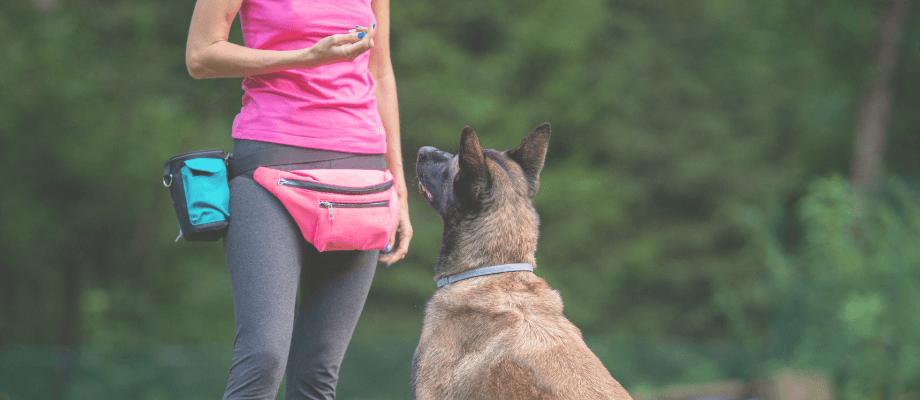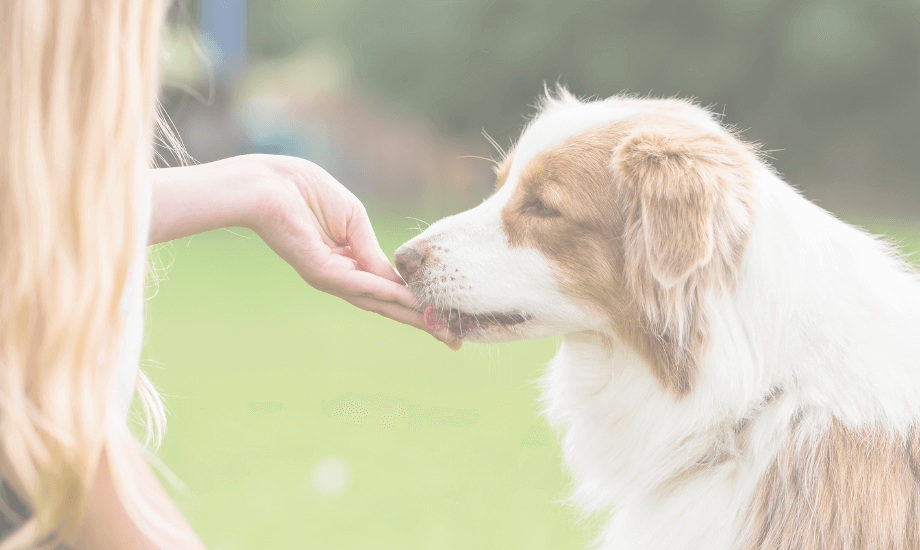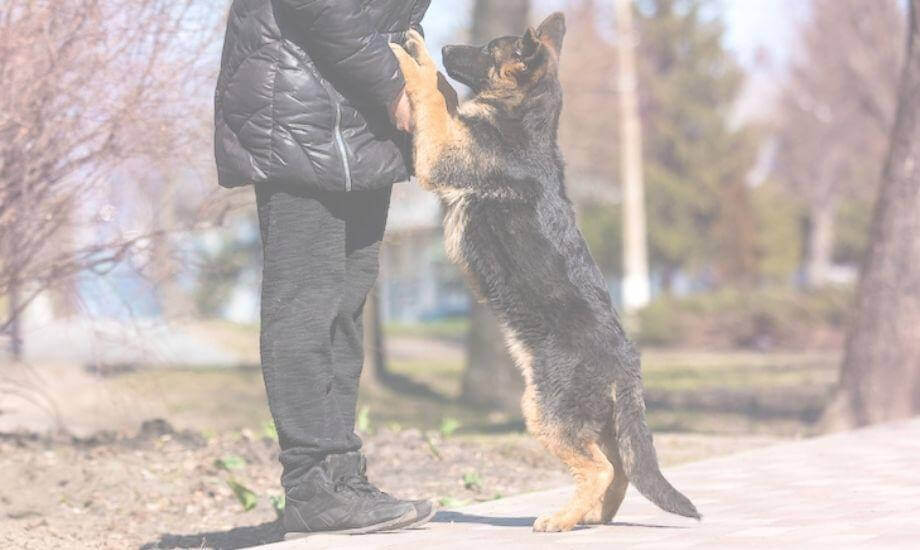Table of Contents
Summary✍️
Dog training commands are essential for your dog’s well-being and your relationship with them. This article covers key commands every dog should know and provides practical tips for effective training. By incorporating Healthybud Mini Training Treats, training becomes a rewarding experience for both you and your dog. Consistency, patience, and a touch of fun will lead to a well-behaved, happy dog ready to share many adventures with you!
[dib_prod_7432566407364]
Key Takeaways🔑
- Commands like “Come,” “Sit,” and “Leave It” are crucial for your dog’s safety and your peace of mind.
- Using the same cues every time will help your dog learn faster and retain commands longer.
- Proper training enhances the bond between you and your dog, improves their impulse control, and makes daily activities more enjoyable.
- Dog Training Commands: Why They Matter at Any Age🐶
Ever heard the saying, "You can’t teach an old dog new tricks"? We're here to prove that wrong! Whether you have a playful puppy or a wise golden oldie, every dog can learn dog training commands that enrich their lives and strengthen the bond you share. By pairing training sessions with Healthybud Mini Training Treats, you can make the learning process even more enjoyable and effective for your furry friend.
Why Are Commands So Important? 🤔
Commands are more than just cool tricks; they’re the language you and your dog use to communicate. These commands help your dog understand what to expect, making for happy adventures and a harmonious home. Whether it’s a verbal cue or a hand signal, dogs are excellent at picking up on our tone and body language. With patience and consistency, your dog can learn training commands that make life easier and more enjoyable for both of you.
Commands also play a critical role in mental stimulation. Training exercises your dog's brain, keeping them sharp and attentive. This mental engagement is particularly important for breeds that thrive on intellectual challenges or for older dogs who may benefit from cognitive stimulation. Over time, consistent training builds your dog’s confidence and strengthens the bond between you.
Pro Tip: Consistency is Key! 🗝️
Always use the same word or signal for a command. This consistency is especially important for dogs who are deaf or when you're in a noisy environment. Training builds on itself, like stacking blocks—the more your dog learns, the easier it becomes to teach them new tricks. Consistency not only helps your dog learn faster but also ensures they retain what they’ve learned over time.
Why Train Your Dog? 🏆
Training isn’t just about getting your dog to follow orders; it’s about deepening your bond. Imagine visiting a friend’s house, and your dog calmly stays by your side instead of jumping on the furniture. Or enjoying a peaceful walk without your arm being pulled out of its socket. With consistent training, these scenarios can become your reality!
Training also teaches your dog impulse control, which is crucial in all situations—from busy streets to quiet coffee shops. Young dogs, in particular, struggle with self-control, but with regular practice, they can learn to stay calm and focused no matter where they are. A well-trained dog is not only more enjoyable to be around but also safer, as they are less likely to engage in dangerous behaviors.
Essential Dog Training Commands 🐕🦺
These basic Dog training commands will set you and your dog up for more advanced training down the road, opening up a world of fun activities like agility, nose work, and even service dog tasks!
1. Attention Command 👀
Teaching your dog to focus on you is the stepping stone to all other Dog training commands. Without their attention, they won’t be able to follow your other commands. The attention command is also useful in distracting environments where you need your dog to concentrate.
How to Teach:
Say your dog’s name. When they look at you, mark the behavior with a happy “Yes!” and reward them with a tasty treat.
If they’re not looking, hold a treat near your face, say their name, and reward them when they make eye contact with you.
Practice a few times but keep it short and sweet—training should be fun!
2. “Come” Command 🚶♂️
A reliable recall is one of the most important commands your dog can learn. It could even save your dog’s life in a tricky situation. Whether your dog is off-leash in a park or you need them to come inside quickly, the “come” command is a must-have in your training toolkit.
How to Teach:
Start with your dog on a leash and use a high-value treat as an incentive.
Say “Come!” in an upbeat tone. When your dog moves toward you, enthusiastically reward them with a treat.
Practice in a safe, enclosed area, and gradually increase the distance and distractions to build their confidence.
3. “Leave It” Command 🚫
This command is a lifesaver! Teaching your dog to “leave it” can prevent them from grabbing something dangerous or toxic. It also helps in managing impulse control, as your dog learns that not everything they see is for them.
How to Teach:
Hold a treat in a closed fist and say “Leave it.” When your dog stops trying to get the treat, mark the behavior and reward them with a high-value treat like Healthybud Cod Skins—perfect for switching things up from the beef-based Mini Training Treats.
Introduce other objects to reinforce that “leave it” means to ignore the item completely.
4. “Sit” Command 🪑
The “sit” command is often the first thing people teach their dogs. It’s a simple yet powerful tool to manage your dog’s behavior in various situations, such as when greeting people or before crossing the street.
How to Teach:
Hold a treat above your dog’s nose and slowly move it backward. As their eyes follow the treat, their bottom will naturally lower to the ground.
The moment they sit, say “Yes!” and give them the treat.
5. “Down” Command 🛏️
Once your dog masters “sit,” you can start to teach them to lie down on command. This is useful for helping them stay calm in busy or exciting situations, like when guests arrive or during vet visits.
How to Teach:
Start with your dog in a sitting position. Hold a treat near their nose and slowly move it toward the floor.
When they lie down completely, mark the behavior by praising and rewarding them.
6. Loose Leash Walking 🦮
Walking calmly on a leash is crucial for safe and enjoyable walks. A dog that pulls can cause accidents or even escape from their leash. Teaching your dog to walk on a loose leash will make your outings more pleasant for both of you.
How to Teach:
Let your dog burn off some energy in a safe area before starting your walk.
Pick a side for your dog to walk on and be consistent. Use a short leash with some slack.
Start walking, and reward your dog when they stay close to your side. If they start to pull, stop walking and wait for them to come back to you before continuing.
Training is a Journey, Not a Destination⭐
Training is an ongoing process that requires patience, consistency, and love. The rewards are more than worth the effort! With time and commitment, your dog will not only learn these commands but will also become a well-mannered, happy member of your family.
DYK? Healthybud Co-Founder Dana’s Story 🍌
Did you know that Dana, one of the Healthybud Co-Founders came up with the idea for the Banana Chips for her dog Lyla, who is absolutely crazy for bananas? Since fresh bananas were messy to take on walks, Dana made these easy-to-carry chips—perfect for on-the-go snacking! 🍌 This innovation is just one example of how understanding your dog’s needs can lead to creative solutions that make training and everyday life easier and more enjoyable.
[dib_prod_6634412048580]
FAQs
1. How often should I train my dog with these commands?
It's best to practice these commands daily, even if it's just for a few minutes. Short, consistent training sessions are more effective than long, infrequent ones. Aim for 5-10 minute sessions multiple times a day, especially with younger dogs or those new to training.
2. What if my dog doesn’t respond to a command?
If your dog doesn’t respond, try to reduce distractions and simplify the training environment. Ensure you’re using high-value treats that your dog loves and practice patience. Remember, consistency is key. If your dog continues to struggle, consider seeking advice from a professional trainer.
3. Can I use other treats instead of Healthybud Mini Training Treats?
Yes, you can use other treats, but make sure they are healthy and appropriate for your dog's size and dietary needs. Healthybud Mini Training Treats are specially formulated to be both nutritious and enticing, making them an excellent choice for training.
Expert Advice
Coeli Fortun, a certified Canine Nutrition Coach, emphasizes the importance of combining training with healthy treats. "Using natural, high-quality treats during training not only reinforces positive behavior but also contributes to your dog’s overall health," says Coeli. She recommends Healthybud’s Mini Training Treats for their nutritious ingredients and irresistible taste, making them an excellent choice for reinforcing commands.
For more tips on canine nutrition and dog training commands, you can connect with Coeli Fortun on Healthybud’s Instagram page: @coelifortun
Conclusion
Dog training commands, regardless of their age, is vital for their well-being and your relationship. This blog covers essential commands every dog should know and offers practical tips for effective training. By using Healthybud Mini Training Treats, you can make training a rewarding experience for both you and your dog. Consistency, patience, and a little bit of fun will lead to a well-behaved, happy dog ready to share many adventures with you!
[dib_prod_7432566407364]
🚨 Special Promo Alert! As a thank you for reading our Dog training commands blog, enjoy a 15% discount on Healthybud's Single-Ingredient Treats! Use code BLOG15 at checkout.
📖 Loving these educational blog posts? Click here to join the mailing list today so you never miss out on a new post (and get 20% off just for signing up!)
Author Bio:
Brian & Magnus
Brian Benson has been training his own dogs since he was a kid, turning a passion into a lifelong skill. After he adopted @magnusthetherapydog, he worked to build a solid training foundation: Brian started with basic obedience and progressed into trick training, therapy dog work, service dog skills, and even nose work winning multiple trials in scent detection with Magnus by his side.
With a community of millions of dog lovers on social media, Brian realized that a lot of people wanted to know how Magnus is so incredibly well trained so he created a FREE dog training community to help people train their own dogs at home.









